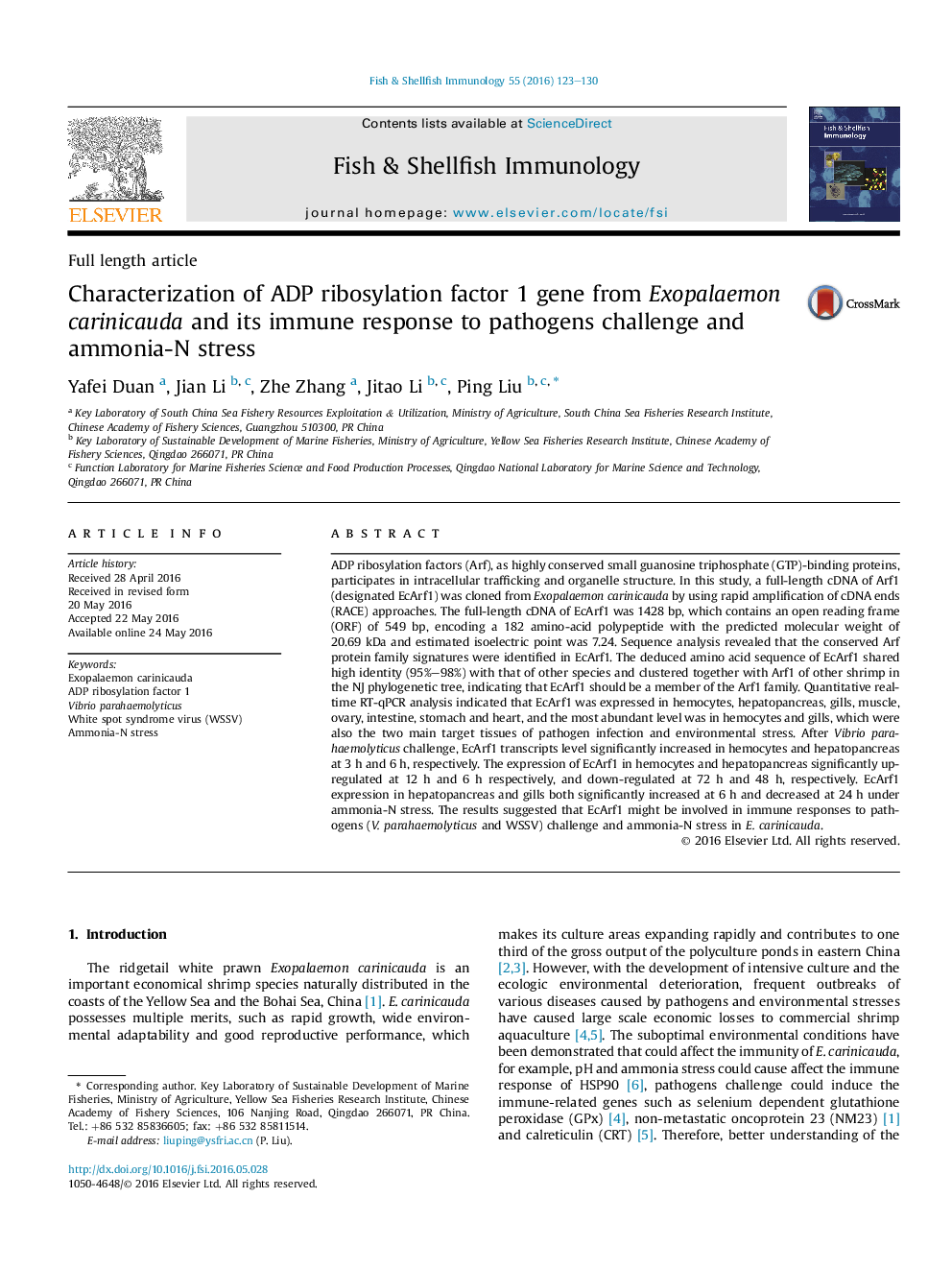| کد مقاله | کد نشریه | سال انتشار | مقاله انگلیسی | نسخه تمام متن |
|---|---|---|---|---|
| 2430766 | 1553619 | 2016 | 8 صفحه PDF | دانلود رایگان |

• ADP ribosylation factor 1 (Arf1) was cloned and characterized from Exopalaemon carinicauda.
• Hemocytes and gills had the abundant EcArf1 expression among all the examined tissues.
• EcArf1 mRNA expression in hemocytes and hepatopancreas induced significantly upon Vibrio parahaemolyticus and WSSV challenge.
• EcArf1 showed significant increase in hepatopancreas and gills after ammonia-N stress.
• The results imply that EcArf1 may be involved in pathogens challenge and ammonia-N stress.
ADP ribosylation factors (Arf), as highly conserved small guanosine triphosphate (GTP)-binding proteins, participates in intracellular trafficking and organelle structure. In this study, a full-length cDNA of Arf1 (designated EcArf1) was cloned from Exopalaemon carinicauda by using rapid amplification of cDNA ends (RACE) approaches. The full-length cDNA of EcArf1 was 1428 bp, which contains an open reading frame (ORF) of 549 bp, encoding a 182 amino-acid polypeptide with the predicted molecular weight of 20.69 kDa and estimated isoelectric point was 7.24. Sequence analysis revealed that the conserved Arf protein family signatures were identified in EcArf1. The deduced amino acid sequence of EcArf1 shared high identity (95%–98%) with that of other species and clustered together with Arf1 of other shrimp in the NJ phylogenetic tree, indicating that EcArf1 should be a member of the Arf1 family. Quantitative real-time RT-qPCR analysis indicated that EcArf1 was expressed in hemocytes, hepatopancreas, gills, muscle, ovary, intestine, stomach and heart, and the most abundant level was in hemocytes and gills, which were also the two main target tissues of pathogen infection and environmental stress. After Vibrio parahaemolyticus challenge, EcArf1 transcripts level significantly increased in hemocytes and hepatopancreas at 3 h and 6 h, respectively. The expression of EcArf1 in hemocytes and hepatopancreas significantly up-regulated at 12 h and 6 h respectively, and down-regulated at 72 h and 48 h, respectively. EcArf1 expression in hepatopancreas and gills both significantly increased at 6 h and decreased at 24 h under ammonia-N stress. The results suggested that EcArf1 might be involved in immune responses to pathogens (V. parahaemolyticus and WSSV) challenge and ammonia-N stress in E. carinicauda.
Journal: Fish & Shellfish Immunology - Volume 55, August 2016, Pages 123–130